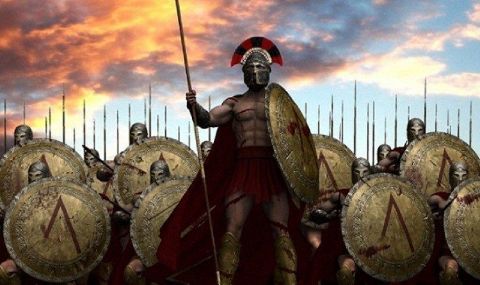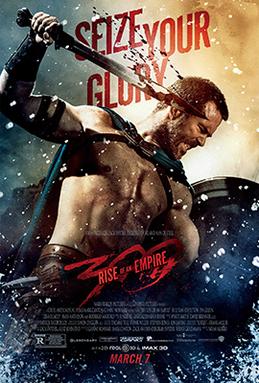Later generations' fascination with ancient Sparta, particularly the Battle of Thermopylae, has led to Xerxes' portrayal in works of popular culture. He was played by David Farrar in the fictional film The 300 Spartans ( 1962 ), where he is portrayed as a cruel, power-crazed despot and an inept commander. The 300 Spartans is a 1962 CinemaScope epic film depicting the Battle of Thermopylae.Made with the cooperation of the Greek government, it was shot in the village of Perachora in the Peloponnese.The working title was Lion of Sparta. It stars Richard Egan as the Spartan king Leonidas, Sir Ralph Richardson as Themistocles of Athens and David Farrar as Persian king Xerxes, with Diane Baker as. Leonidas was a 5th century B.C. Military king of the Greek city-state of Sparta. He is most well known for bravely leading a small force of Greeks, including the famous 300 Spartans, along with a few hundred Thespians and Thebans against the much larger Persian army of Xerxes, at the pass of Thermopylae in 480 B.C. During the Persian Wars. On this day in 480 B.C., the Persians under the command of Xerxes in the second invasion of Greece went to battle with a greatly outnumbered force of Spartans and Greeks under the command of King. The 300 Spartans is an account of the 480 B.C. Battle of Thermopylae, in which the Spartan King Leonidis, played by Richard Egan, led a remarkably small number of men to victory over an invading Persian army led by evil King Xerxes that was about 20 times as large.
The 300 Spartans (1962)
“Thermopylae… mighty battle epic of a handful of men forming the invincible “flying wedge” – against a killer horde five million strong!”
Director: Rudolph Maté
Cast: Richard Egan, Ralph Richardson, Diane Baker
Synopsis: A small army of Greeks spearheaded by 300 Spartans do battle with the whole invading Persian army.

The true story of the stand made by 300 Spartan soldiers against an entire army of invading Persians is given the Hollywood Cinemascope treatment here in a lushly mounted production featuring a solid if unspectacular cast. Second-string leading man Richard Egan stars as Leonidas, King of the Spartans, who marches his personal bodyguards to Thermopylae to repel the invading Persian hordes. He expects to be joined by the rest of the Spartan army but, when he is betrayed by a Council decision, he and his faithful soldiers decide to make a stand.
This is quite an inspirational story, and the battle scenes — if a little tame by today’s standards — are impressively staged. Unfortunately, we have to sit through an hour or so of turgid politics and a romantic sub-plot that stubbornly refuses to be even slightly involving, before we reach the main thrust of the story. Many of the characters are strictly one-dimensional, their words describing the mindset of a culture rather than the thoughts and feelings of individuals, which I guess is why they fail to engage the viewer. On the plus side, the Spartans’ final stand is poignantly handled, there is some stunning location cinematography from Geoffrey Unsworth, and the remastered DVD offers a beautifully crisp and clear picture.
This is one of those films that, if you saw it as a kid, sticks in your memory because of the climactic battle scenes and, because of that, some might have a mistakenly high opinion of the film as a whole.

(Reviewed 1st October 2005)
Watch this video on YouTube
Most people who have watched Zack Snyder’s famous 2007 fantasy historical film “300”, might think they know the ancient Greek story of Leonidas and the battle of Thermopylae, but the historic facts are quite different to what was portrayed in the fantasy film.

Leonidas was a warrior king of Sparta, one of the most dominant ancient Greek cities. He was not destined by birth to become king at all, and did so only because his older half-brother Cleomenes died without male issue.
During his reign, King Xerxes of Persia sought to conquer all of Greece, after his father’s failed attempt. By 480 BC, Xerxes had built up an enormous army of some one hundred and fifty thousand men and a navy of six hundred ships.
The invasion led to the Battle of Thermopylae, which is considered one of the most famous battles in European ancient history. Unlike other battles, however, it was not a victory for the Greeks, but a defeat. Its fame is derived from being one of the most courageous last stands by the vastly outnumbered defending army of Greek city states led by King Leonidas of Sparta against the invading Persians under King Xerxes.
The Greek force of approximately 7,000 men, 300 of which were Spartans, chose Thermopylae as the first line of defense, a narrow pass between the mountains of central Greece and the sea. This was a strategic move on the part of the Greeks. The narrowness of the pass negated the advantage the Persians had in numbers.
According to Plutarch, Xerxes, king of Persia, demanded that the Spartans surrender their weapons and King Leonidas I responded with the phrase “Molon labe”, which means “Come and take them”.
The Battle of Thermopylae took place over three days. For the first two days, the Greeks were able to hold the front line, preventing the Persians from breaking through the narrow pass. Their longer thrusting spears and their heavy shields and body armor gave them a distinct advantage over the Persians, who were equipped with shorter javelin-type spears, wicker shields, and armor made only of woven linen.
The third day however, a man named Ephialtes, revealed a path that led the Persians around the mountain towards the back of the defending force. When word reached Leonidas that their position had been compromised, he made a decision that continues to be the subject of immense analysis and debate – rather than abandon their position and withdraw to the south before the Persians arrived, Leonidas let the majority of his army go, while ordering the 300 Spartans, 700 Thespians, and 400 Thebans to remain and fight.
Although there has been much speculation around this decision, most historians agree that Leonidas decided to sacrifice himself and his men in order to give enough time for the rest of the army to flee.
The Greeks died at the battle of Thermopylae. Xerxes, and his army, could now march through Greece and - presumably - defeat all the city-states. But the stories of the defenders' courage at Thermopylae began to quickly spread, positively impacting the morale of other Greeks. And the delay of battle also achieved what Leonides had hoped it would. The Athenians, for example, had time to flee their city before Xerxes reached it.

The defeat at Thermopylae, in other words, led to the victory in the Battles of Salamis and Plataea, which effectively ended the Second Persian Invasion.
300 Spartans At Thermopylae
Moreover, the battle left a legacy that lasted for millennia, demonstrating the courage of a small number of warriors, who in the face of a much larger enemy, stood their ground until the bitter end.